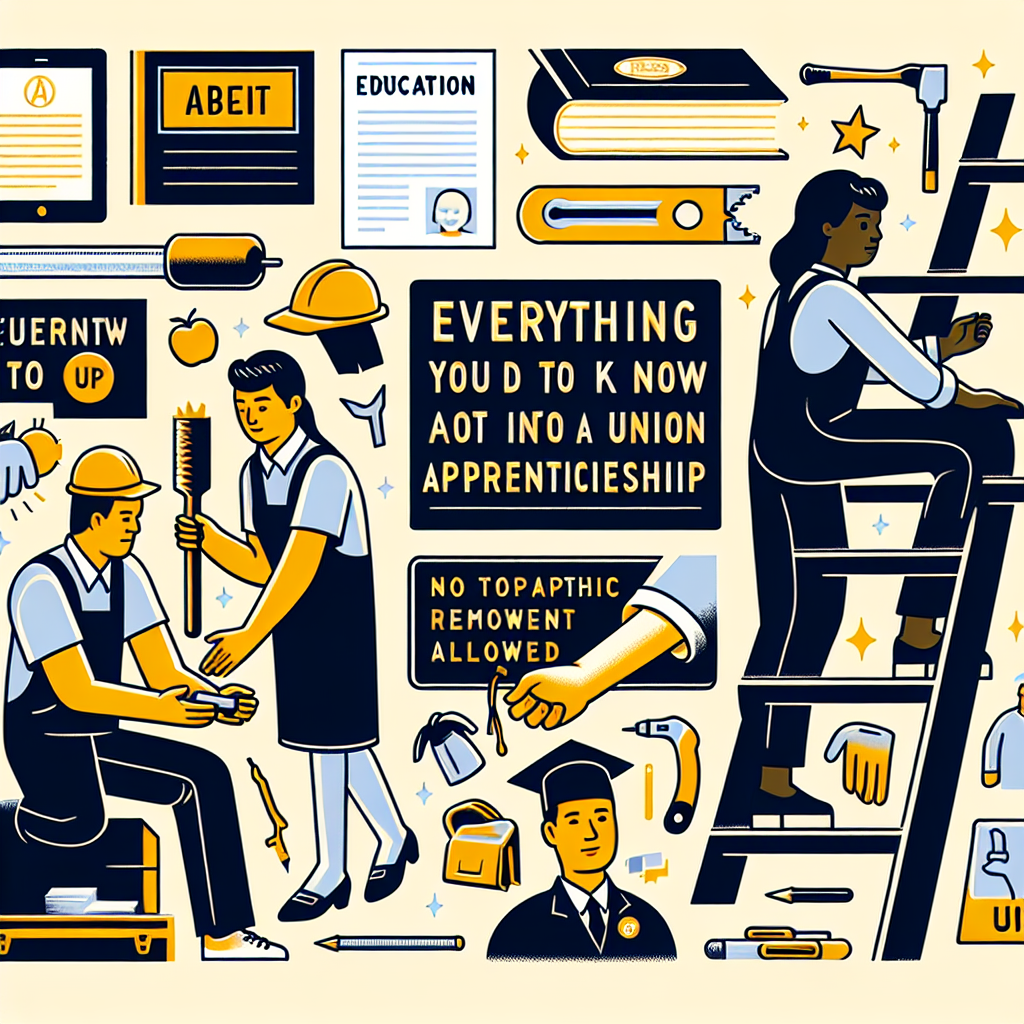Breaking into a trade through a union apprenticeship can transform your career prospects, combining paid on-the-job training with classroom learning and often leading to well-paying, stable employment. Everything You Need To Know About How To Get Into A Union Apprenticeship is a practical guide to the application process, eligibility, preparation tips, and what to expect during your apprenticeship journey.
How to Enter a Union Apprenticeship: the essentials
Union apprenticeships typically require applicants to meet basic criteria such as a high school diploma or GED, being at least 18 years old, and passing aptitude or entrance exams. Many trades also require a valid driver’s license and the ability to pass a drug screening. The exact requirements differ by trade and local union chapter, so contacting the apprenticeship office for the specific union and region is essential.
Step-by-step application process
- Research local unions and trades. Identify which trades are in demand in your area—electrical, plumbing, carpentry, HVAC, and sheet metal are common options.
- Attend an information session or open house. Unions often host orientations that explain program length, pay scales, and classroom schedules.
- Prepare and submit application materials. This may include transcripts, references, and a resume highlighting relevant experience (even volunteer or informal experience).
- Take the aptitude test. Many programs use standardized tests like the Mechanical Aptitude Test or math and reading assessments to evaluate readiness.
- Interview or ranking process. Successful applicants may be ranked based on test scores, interview performance, and any preference points (for veterans or local residents).
- Begin apprenticeship with a combination of paid work and classroom instruction, often spanning 2–5 years depending on the trade.
Preparing to apply: skills and training that help
Before applying, build a foundation that will make your application stand out. Take basic courses in math and blueprint reading, seek out pre-apprenticeship or trade school programs, and gain hands-on experience through community projects or entry-level jobs. Physical fitness and safety awareness are often important, as many trades require manual labor and adherence to safety protocols.
Soft skills and professional habits
Show reliability, punctuality, and a willingness to learn—qualities that supervisors value highly. Strong communication, problem-solving, and teamwork will help you progress faster once on the job. If you’re considering a career change later in life, resources and success stories can be especially encouraging; for example, see practical advice tailored to career changers like starting fresh: new career paths for women at 50.
Financing, wages, and benefits
Union apprenticeships are paid positions; wages typically increase as you complete hours and levels of training. Many apprenticeships also offer health benefits, retirement plans, and union support for continued education. Costs for classroom training are usually covered by the union or employer, but some programs may require modest fees for textbooks or tools.
Duration and credentialing
Apprenticeship lengths vary: some are two years, while others extend to five years or more depending on the complexity of the trade. Successful completion typically results in a journeyperson certificate or similar credential recognized by employers and other unions.
Common obstacles and how to overcome them
- Competition for spots: Improve your application by gaining relevant experience and preparing thoroughly for aptitude tests.
- Transportation and scheduling: Look for local support programs or union resources that help with transportation or provide flexible class schedules.
- Physical demands: Start a basic fitness routine and practice safe lifting and body mechanics to reduce injury risk.
Where to find trustworthy information
Use official union apprenticeship offices and recognized government or educational resources for current program details. For an overview of apprenticeship roles, outcomes, and how apprenticeships work in the labor market, a helpful government-based summary can be found at the Bureau of Labor Statistics’ career outlook page on apprenticeship: BLS article on apprenticeship pathways.
Short checklist before you apply
- Confirm eligibility and local union requirements.
- Complete basic math and reading preparation.
- Attend an informational meeting or contact the apprenticeship office.
- Gather documents: diploma/GED, ID, references, and resume.
- Practice for aptitude tests and prepare for interviews.
FAQ
Q: How long does a typical union apprenticeship last?
A: Most last between two and five years, depending on the trade and required hours of on-the-job training and classroom instruction.
Q: Do I get paid during an apprenticeship?
A: Yes. Apprentices are paid; wages usually start lower and increase incrementally as you complete training milestones and hours.
Q: Can I switch trades after starting an apprenticeship?
A: It’s possible but can be complicated. Talk to your apprenticeship coordinator about transferring credits, additional training required, and how seniority or qualifications would be affected.



